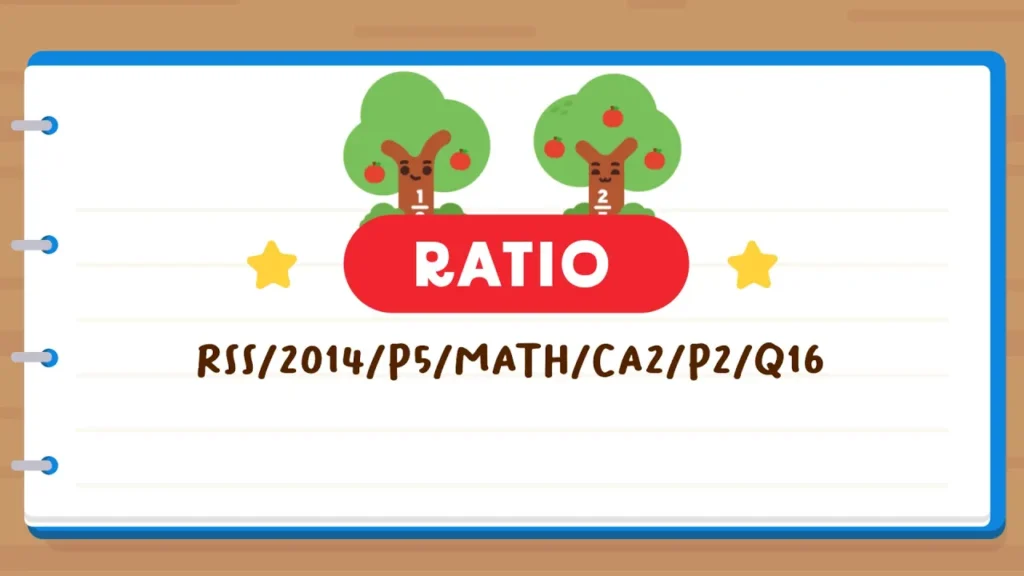Introduction
In P5 Math, your child may be given diagrams with shaded areas. To determine the area of the shaded part, he/she will need to use the ratios provided in the question.
While it may look overwhelming, applying the right strategies can make these problems easier to tackle.
In this blog post, we’ll share strategies to help your child master how to:
🔘 Label diagrams for clarity
🔘 Apply ratios when solving P5 Math problem sums
🔘 Draw models to simplify calculations
Alternatively, you can also watch my explainer video for free by clicking this link.
Let’s Take A Look At This Ratio Question
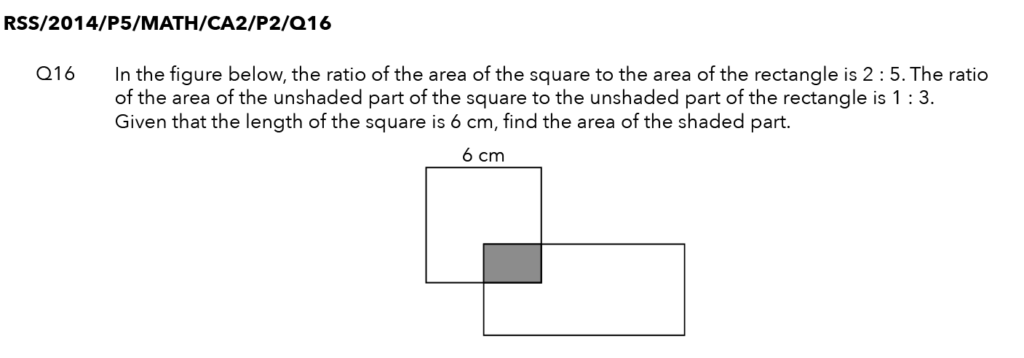
Source: Red Swastika School – 2014 P5 CA2 Examination Paper [Q16]
Read Also:
Thought Process
The question tells us that the ratio of the area of the square to the area of the rectangle is 2:5.
Let us note this information at the side where the area of the square is 2 units and the area of the rectangle is 5 units.
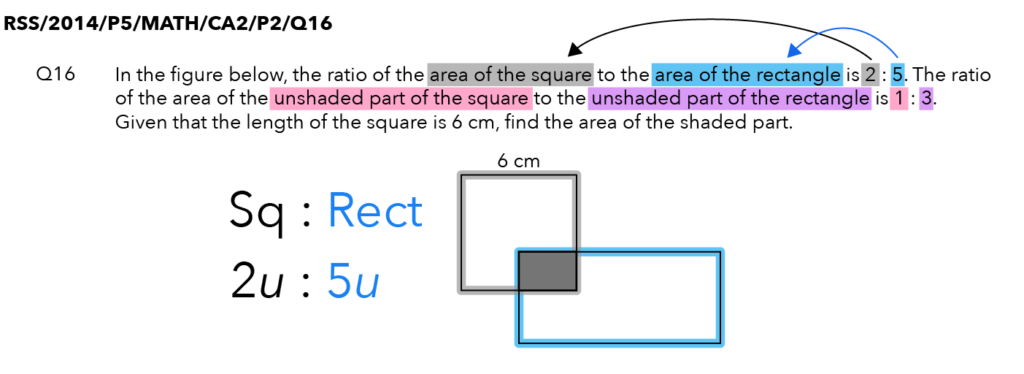
Source: Red Swastika School – 2014 P5 CA2 Examination Paper [Q16]
Meanwhile, the ratio of the area of the unshaded part of the square to the unshaded part of the rectangle is 1:3.
In the diagram, we see that other than a grey square and a blue rectangle, there is a shaded part in the middle.
Let us label the diagram to make it easier to understand.
We’ll use X for the unshaded part of the square, Y for the shaded part of the figure and Z for the unshaded part of the rectangle.
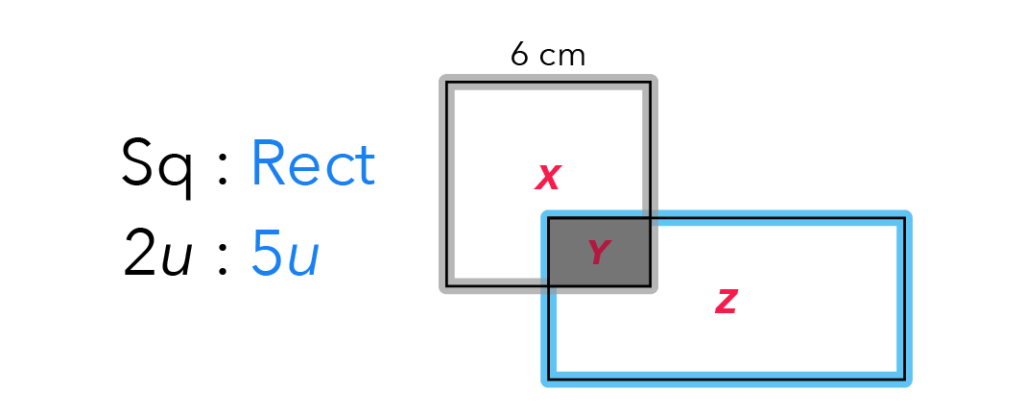
Let us also write down under the area of the square that it is made up of X + Y and under the area of the rectangle that it is made up of Y + Z.
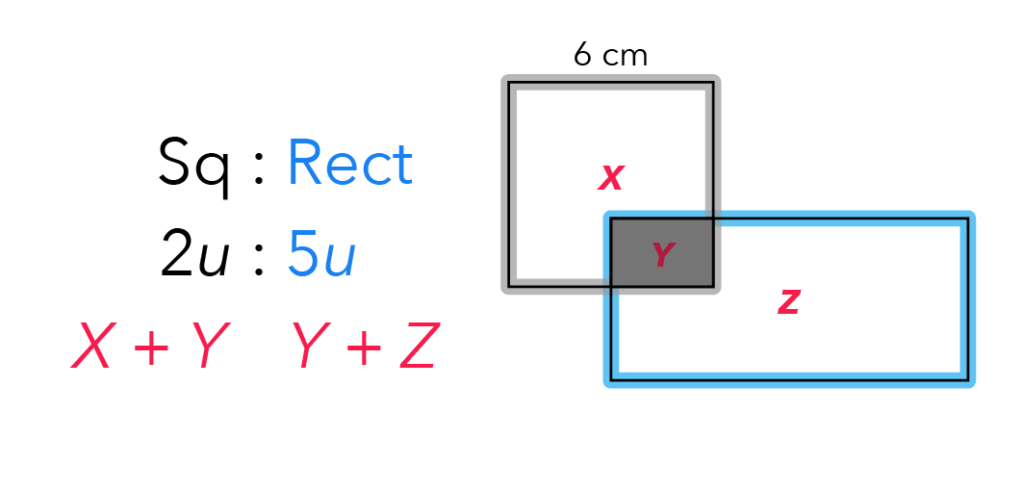
In the second sentence of the question, we see a ratio of 1:3. 1 refers to X (the unshaded part of the square), while 3 refers to Z (the unshaded part of the rectangle).
The ratio 1:3 refers to the unshaded parts and has no relationship to the square or the rectangle yet.
Until we can find the relationship, let’s label 1 as 1US, for the unshaded part of the square.
Let us label the unshaded part of the rectangle as 3US. We have noted 1US under the letter X and 3US under the letter Z in our working.
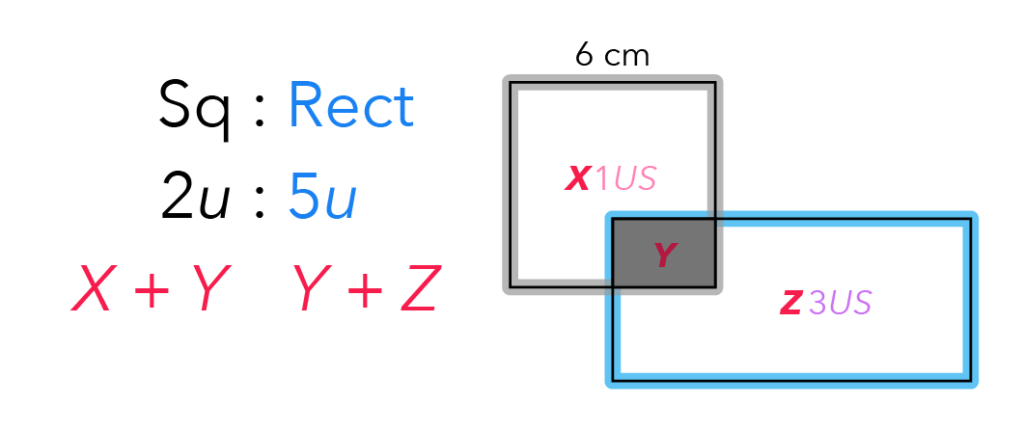
The question also tells us that the length of the square is 6 cm.

Source: Red Swastika School – 2014 P5 CA2 Examination Paper [Q16]
Since the sides of the square are the same, we will multiply the length of one side by itself.
Now, let us multiply 6 by itself and we will get 36 cm2.

.
Let us now find the area of the rectangle.
Remember that we have noted 2 units for the area of the square. And since the area of the square is 36 cm2, 2 units will equate to 36 cm2.
We can now find 1 unit, which will give us 18 cm2.
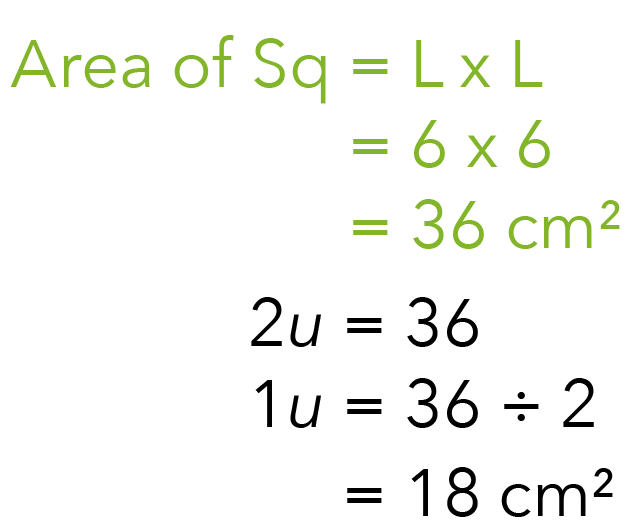
To find the area of the blue rectangle, let us find 5 units and we will get 90 cm2, which is the area of the blue rectangle.
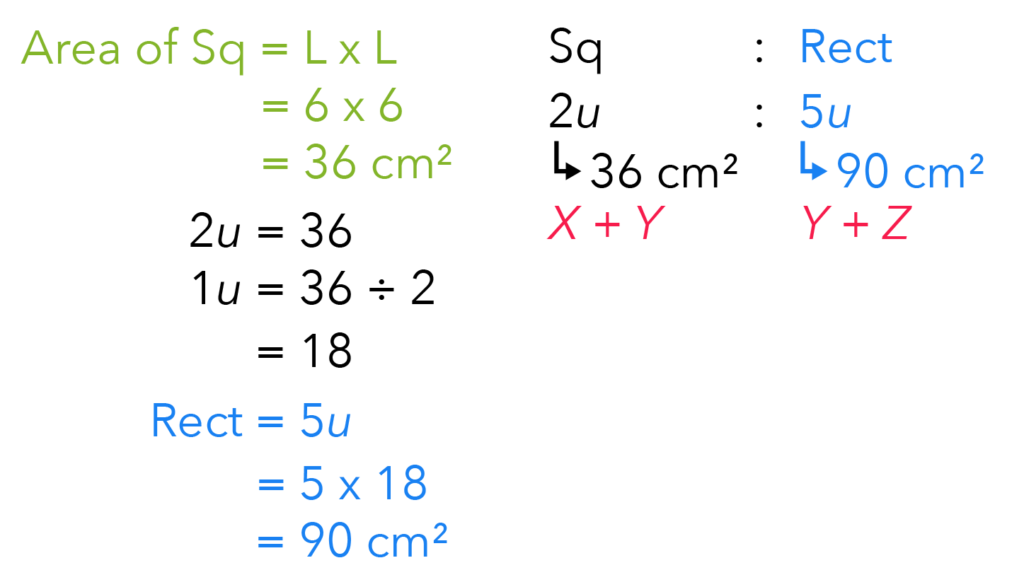
To solve the question, we need to find the area of the shaded part, which we labelled Letter Y.
Letter Y is found in both the area of the rectangle and the area of the square. Let’s use a model to help us visualise is the information better.
For the model of the square, we need two boxes, which we will label as Y in one box and 1US, which is the area of X, in the other box.
Let us also label total area of the square, which is 36 cm2.
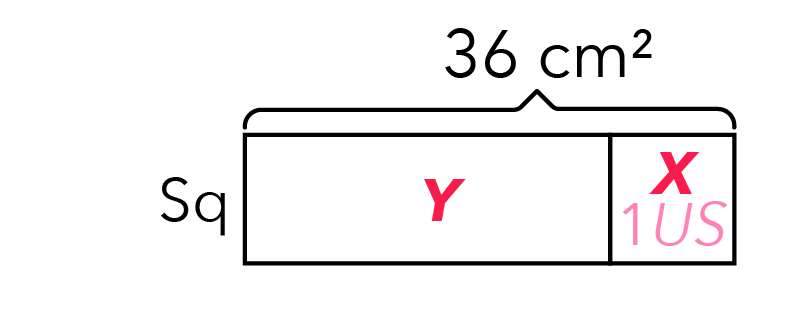
Let’s do the same for the model of the rectangle.
For the rectangle’s model, we also have letter Y.
We can draw the Y first because the Y in the rectangle is the same as the Y in the square.
Let us proceed to draw three smaller boxes representing 3US, which is also the area of Z.
Lastly, we need to note that the total area of the rectangle is 90 cm2.
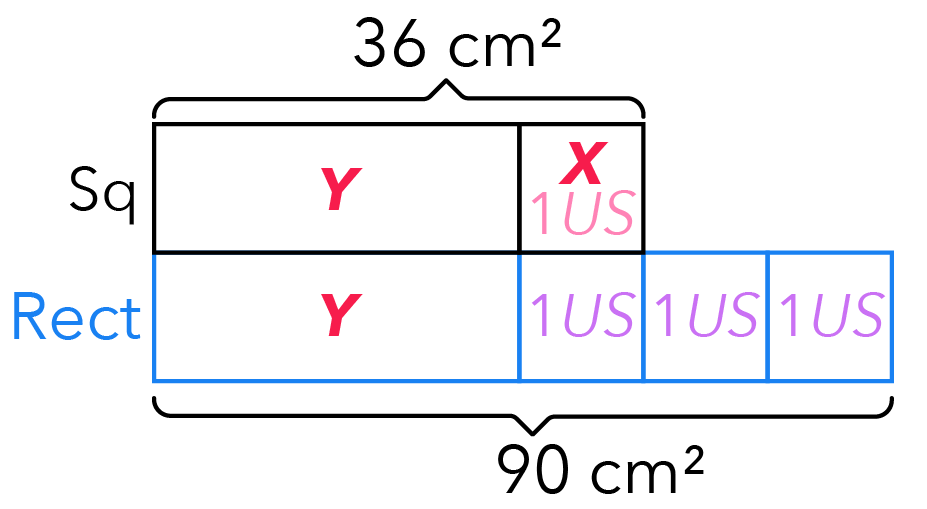
What is the difference between both models? We can see that there is a difference of 2US, as noted by the yellow lines below.

2US is also the difference between the area of the rectangle and the area of the square, giving us a difference of 54 cm2.
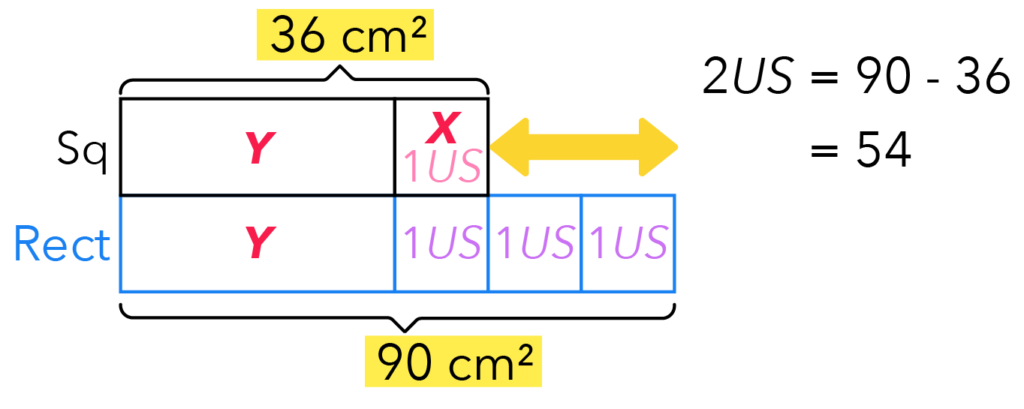
To find 1US, we just need to take 54 divided by 2 and we will get 27 cm2.
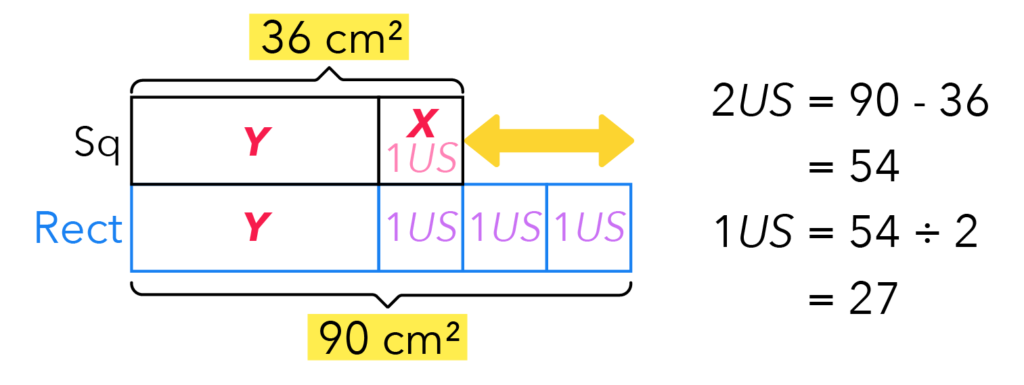
To get our full marks, we must answer the question, which is asking for the area of the shaded part.
To find the shaded part, simply take the area of the square minus the area of the unshaded part of the square, which is 36 cm2 – 27 cm2.
We will arrive at the answer of 9 cm2.
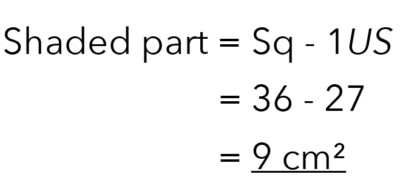
Suggested Answer For Q16
9 cm2
Conclusion
I hope that after reading this P5 Math blog post, you’ve learned these valuable tips in solving word problem sums involving Ratios:
✅ Labelling given diagrams
✅ Understanding how to apply ratios correctly
✅ Drawing models to illustrate relationships
Also remember to use the same units for the different ratios, in this case the ratio of the shaded and unshaded parts.
Stay tuned for more P5 Math blog posts coming your way!

If you like our methodology, we've some ongoing weekly Math classes:


